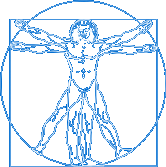
Body Balance Control
As a result of several decades of interdisciplinary research in the areas of neurophysiology and muscle-physiology, psycho-motoric, biomechanics, bio-kinetics and bio-cybernetics, all in the context of competitive sports research in Leipzig, Germany, the following BfMC concepts were developed. All our devices are based on these:
BfMC Body Balance Control
| Aim | To obtain and maintain the functional balance of the musculoskeletal system.
Specifically related to back problems: |
| Main thesis | Only a functionally balanced body is a healthy body. |
| Explanations | Recognizing and reducing imbalances and deficits is enormously important. However, until recently, both the identification and reduction of imbalances and deficits have not found sufficient attention in medicine and sports due to a lack of technical solutions.
A neuromuscular imbalance is an asymmetry in the performance of the musculature, e.g. recognizable by right/left comparison. Particularly in the trunk such imbalances often cause a reduced resilience of the spine and are usually a cause of pain. Neuromuscular deficits express themselves as a reduced performance of the musculature. Taking the back as an example: Since the trunk musculature is crucial for the stabilization of the spine, existing deficits cause an overload of the spine and are thus a further cause for the emergence of back problems. Neuromuscular imbalances and deficits not only arise due to a lack of exercise, but also due to incorrect body posture, morphologic inadequacies (e.g. spine curvature) or one-sided strain at work or in sports. |
| Implementation | All BfMC device systems are based on the Body Balance Control concept. They are computer-supported systems and allow an exact analysis of the motion and strength capabilities of a patient. On this basis an individual training (treatment) programme for the patient is developed. BfMC device systems in combination with the BfMC BioMC software enable:
BfMC’s device systems offer a unique design and functionality. That means that the identification and reduction of neuromuscular imbalances and deficits is now performed with previously unknown quality, efficiency and with minimal space requirements. |


